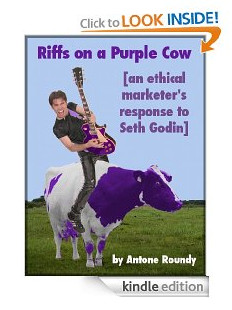When you purchase through links on our site, we may earn an affiliate commission (details)
Which Maximizes Profits Better: Commodities or Differentiation?
Internet marketing pros are always saying that you've got to differentiate or die. But is that true? Something Seth Godin wrote wrote yesterday day got me thinking:
No one expects that dinner at Alinea should cost the same as dinner at McDonald's. After all, even though the calories are the same, the quality, attention to detail and costs are not.
But for books and movies, there's no correlation at all.
A lousy movie costs precisely the same to see in the theatre as Memento did. Even after we find out if the movie is better, the price doesn't change"“a DVD of Toy Story is the same as the new release of the Smurfs.
That's true. As far as it goes. And it's every bit as ridiculous as Seth suggests.
But there's more to it.
Price Anchors
A price anchor is a concept I learned about from Dan Ariely's book Predictably Irrational. The idea is that people expect to pay certain prices for certain classes of things.
When you go to a fast food restaurant, you expect to find a selection of burgers and sandwiches priced $5 and under, as well as a 99¢ "economy" menu.
You expect a new release DVD to cost about $20-25.
You expect a modern movie theater to charge $7.50...or more, depending on where you live.
If you arrive at the theater to see "Transfromers VII: Rise of the REAL Leader of the Decepticons (This Time We Mean It)" and they tell you that tickets to blockbusters cost $20, you're going to compare that to your movie theater ticket price anchor, and you'll probably do something else that evening.
Seth compares the difference between a fine restaurant and McDonalds to the difference between two new DVD releases, and suggests that that means that some product categories are priced according to value and others aren't.
There's some truth to that. But on the other hand, it's partly just a question of how you divide product categories. McDonalds' prices aren't strictly value or quality based -- they're anchored to the fast food category. The Olive Garden's prices are in part determined by our current anchors in the sit down restaurant category.
New release DVDs are, for the most part, a category with a fixed anchor. But some DVDs -- particularly those that aren't released in theaters -- sell at lower prices, even when newly released. And older titles sell for a wide variety of prices based on quality and demand (high-quality movies that have already been purchased by most people who want them may be priced with lower quality movies.)
Should you charge for quality, or price like a commodity?
The conventional wisdom is that by differentiating your product, you can make more money by charging more for it. If the anchors for your product category are set below the value of your product (see this post for an extended discussion of product value and "fair pricing"), then if you can successfully position it outside of the category, you can escape the anchor and make more.
But sometimes, you're better off staying commoditized. If your product is substandard for its category, then the anchor price may be higher than what you could charge by differentiating. (Of course, taking advantage of price anchors to charge more than you could otherwise raises ethical issues.)
The other big advantage to commoditization is that you don't have to work as hard to convince customers to buy.
For example, if you and your friends decide to see a movie Friday night and then check to see what's playing, you're more likely to pay full price for a movie you're only half interested in than you would be if you were to look at the movie listings before deciding how to spend your evening.
In the first instance, a movie is a movie -- a commodity. In the second, it's a way to spend an evening -- more differentiated.
Of course movies aren't strictly commodities -- they're not entirely interchangable. You still have to be the best of the mediocre movies to pull in an audience. But to the extent that they're lumped into a category, they do benefit when consumers decide to buy from the category first, and then choose an alternative.
Whether this is a good strategy for you depends on how much demand there is for the commodity category and how much competition there is.
Can you have the best of both worlds?
Some customers want inexpensive commodities. Others want "the best".
Sometimes a product category is in vogue, and all the commodities competing in the category sell well. Other times, a particular product gets the attention and sales.
Do you see where I'm going with this?
Make a commoditized version of your product, and a premium version. Sell the cheaper version like a commodity, and differentiate the premium version. And know who you're talking to so that you'll know which one to promote.




